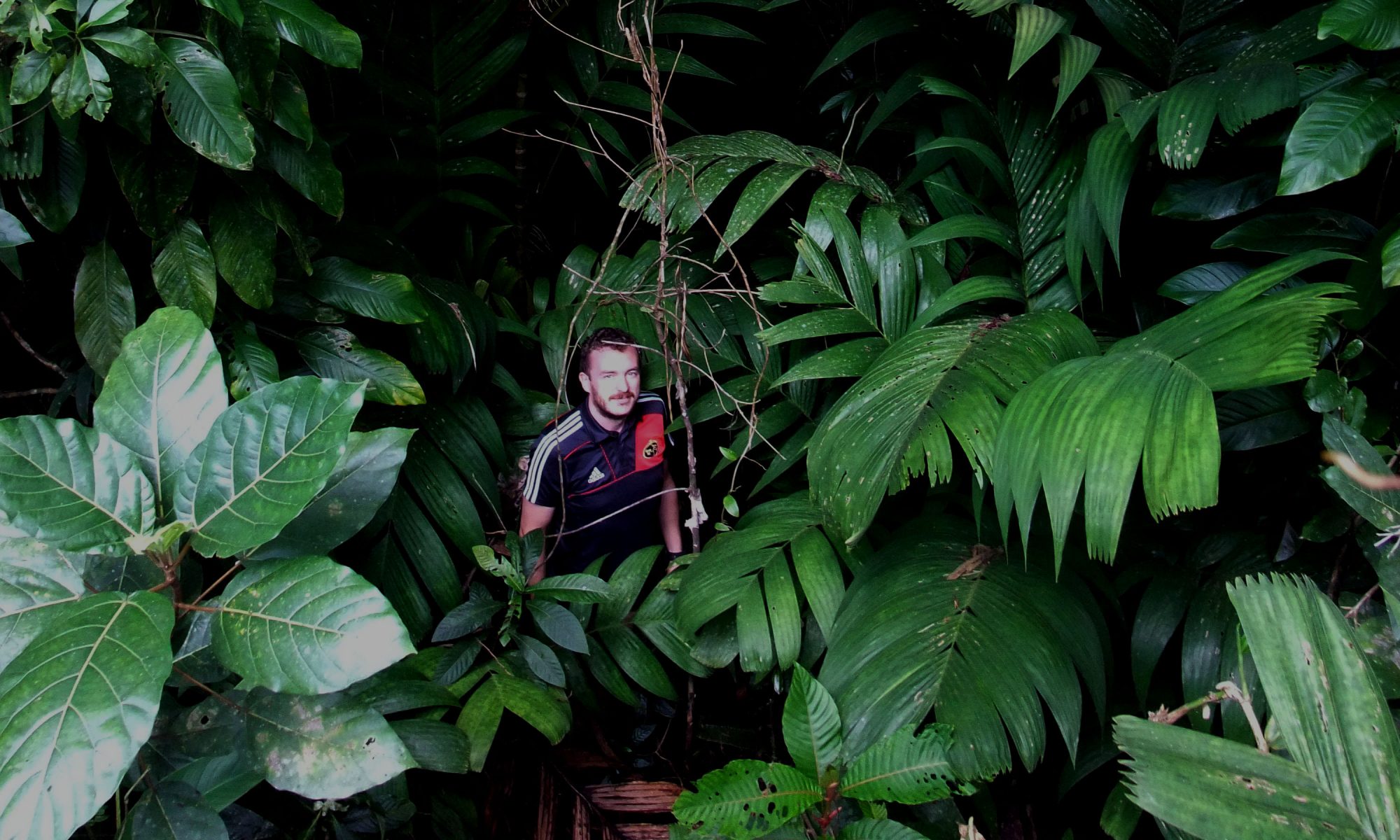Pacific Island Rainforests and Invasive Alien Plants (IAPs)
Tropical island ecosystems are highly susceptible to biological invasions (see e.g. Kueffer et al. 2010, van Kleunen et al. 2015, Russell et al. 2017). For instance, several introduced plant species have already become dominant in native Pacific rainforests (e.g. Psidium cattleianum and Hedychium gardnerianum in Hawaii´s montane rainforest, see Mueller-Dombois et al. 2013, Minden et al. 2010a, b), thus harming native biodiversity and starting to have considerable socio-economic impact e.g. on forestry and vital ecosystem services provided by forests, e.g. carbon sequestering and freshwater retention (e.g. Boehmer 2011, Keppel et al. 2014).
A new and, regarding its invasiveness, unprecedented example in Fiji´s forests is the ivory cane palm, Pinanga coronata, which is native to Java and Sumatra. There, it is one of the dominant species in its native habitat, which includes steep hillsides in montane forests and flat areas in lowland forests from sea level to 1800 m asl. The palm was brought to Fiji for ornamental purposes in the 1970s where it started spreading in the Colo-i-Suva forest reserve on Fiji´s principal island, Viti Levu.
The palm´s natural tendency to form mono-dominant stands implies that P. coronata can outcompete and displace other understory species. Its invasive potential was first recognized in the early 1990s (Keppel & Watling 2011). Today, it forms dense stands in Mahogany plantations of Colo-i-Suva and spreads rapidly into neighbouring native forests in Savura.
Literature:
Boehmer, H. J. (2011): Vulnerability of tropical montane rain forest ecosystems to climate change. – In: Brauch, Hans Günter; Oswald Spring, Ú.; C. Mesjasz, J. Grin, P. Kameri-Mbote, B. Chourou, P. Dunay, J. Birkmann (eds.): Coping with Global Environmental Change, Disasters and Security – Threats, Challenges, Vulnerabilities and Risks. Hexagon Series on Human and Environmental Security and Peace, vol. 5., 789-802. Berlin – Heidelberg – New York: Springer.
Keppel, G., Morrison, C., Meyer, J.-Y. & H. J. Boehmer (2014): Isolated and vulnerable: the history and future of Pacific Island terrestrial biodiversity. – Pacific Conservation Biology 20(2): 136-145.
Keppel, G. & D. Watling (2011): Ticking time bombs: current and potential future impacts of four invasive plant species on the biodiversity of lowland tropical rainforests in southeast Viti Levu, Fiji. The South Pacific Journal of Natural and Applied Sciences 29 (1), 43-45.
Kueffer, C., Daehler, C., Torres-Santana, C. W., Lavergne, C., Meyer, J.-Y., Otto, R. & L. Silva (2010): A global comparison of plant invasions on oceanic islands. – Perspectives in Plant Ecology Evolution and Systematics 12 (2), 145-161.
Minden, V., Jacobi, J. D., Porembski, S. & H. J. Boehmer (2010a): Effects of invasive alien kahili ginger (Hedychium gardnerianum) on native plant species regeneration in a Hawaiian rainforest. – Applied Vegetation Science 13 (1): 5-14.
Minden, V., Henneberg, K. J., Porembski, S. & H. J. Boehmer (2010b): Invasion and management of alien Hedychium gardnerianum (kahili ginger, Zingiberaceae) alter plant species composition of a montane rainforest on the island of Hawai’i. – Plant Ecology 206: 321-333.
Mueller-Dombois, D., Jacobi, J. D., Boehmer, H. J. & J. P. Price (2013): Ohia Lehua Rainforest. The story of a dynamic ecosystem with relevance to forests worldwide. 278 p., Amazon Press.
Russell, J. C., Meyer, J.-Y., Holmes, N. D. & S. Pagad (2017): Invasive alien species on islands: impacts, distribution, interactions and management. – Environmental Conservation. doi:10.1017/S0376892917000297
Seebens, H., T. M. Blackburn, E. E. Dyer, P. Genovesi, P. E. Hulme, J. M. Jeschke, S. Pagad, P. Pyšek, M. Winter, M. Arianoutsou, S. Bacher, B. Blasius, G. Brundu, C. Capinha, L. Celesti-Grapow, W. Dawson, S. Dullinger, N. Fuentes, H. Jäger, J. Kartesz, M. Kenis, H. Kreft, I. Kühn, B. Lenzner, A. Liebhold, A. Mosena, D. Moser, M. Nishino, D. Pearman, J. Pergl, W. Rabitsch, J. Rojas-Sandoval, A. Roques, S. Rorke, S. Rossinelli, H. E. Roy, R. Scalera, S. Schindler, K.Štajerová, B. Tokarska-Guzik, M. van Kleunen, K. Walker, P. Weigelt, T. Yamanaka & F. Essl (2017): No saturation in the accumulation of alien species worldwide. Nature Communications 8: 14435 (open access).
van Kleunen, M., Dawson, W., Essl, F., Pergl, J., Winter, M. & E. Weber (2015): Global exchange and accumulation of non-native plants. – Nature 525, 100-103.
